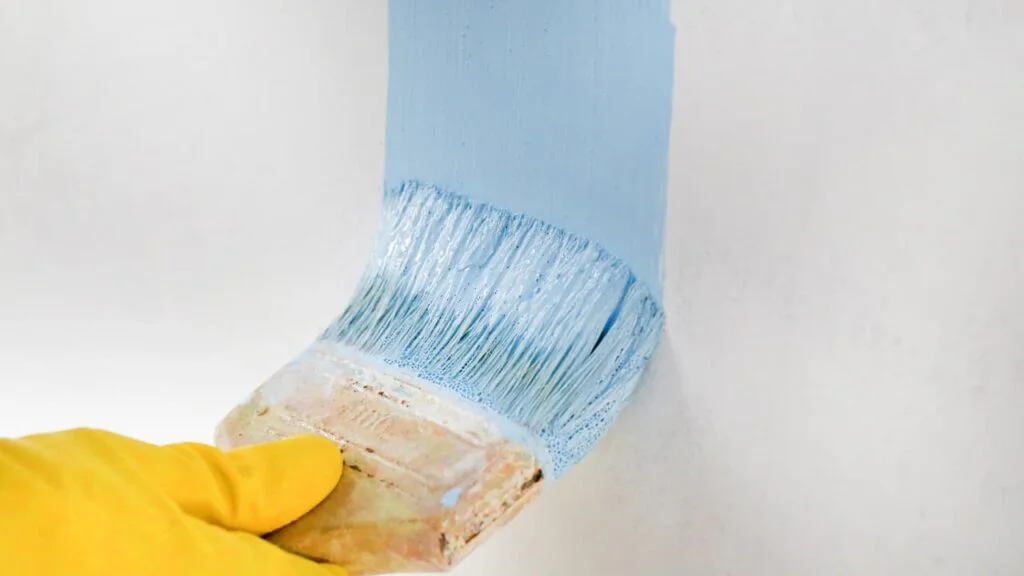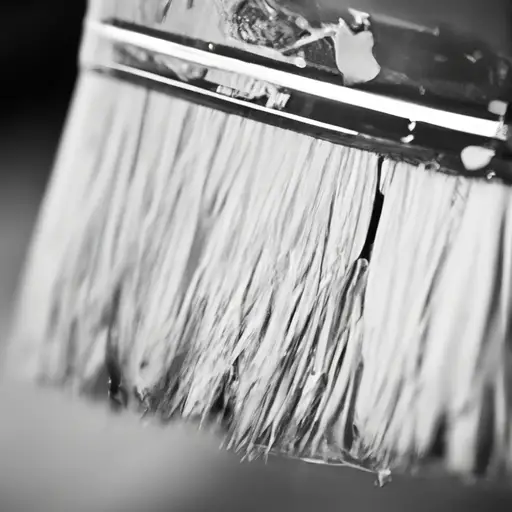Let’s face it, painting can be a bit of a challenge, especially when those pesky brush strokes seem to ruin the smooth finish you were aiming for. But fear not, because we have all the answers you need to get rid of these unwanted streaks. Whether you’re a DIY enthusiast, a homeowner sprucing up your space, an artist looking for tips, or just someone seeking information about painting, we’ve got you covered. In this article, we’ll tackle the age-old question: how do you get rid of brush strokes when painting? So grab your paintbrushes and let’s dive into the world of brush stroke elimination!
How Do You Get Rid Of Brush Strokes When Painting?
Table of Contents
Preparation
Before you start painting, it’s important to properly prepare the surface to ensure a smooth and long-lasting finish.
Clean and prep the surface
Start by cleaning the surface you’ll be painting. Remove any dirt, dust, or grease by wiping it down with a mild detergent solution. Rinse thoroughly and let it dry completely before moving on to the next step.
Sand the surface
Next, you’ll want to sand the surface to create a slightly rough texture that will help the paint adhere better. Use a fine-grit sandpaper and sand in a circular motion. Be sure to remove any loose paint or rough patches. Once you’re done sanding, wipe away any dust with a clean cloth.
Use a primer
Applying a primer is crucial, especially if you’re painting over a previously painted or uneven surface. A primer helps to create a smooth base for the paint and enhances its durability. Choose a primer that is suitable for your specific project, whether it’s wood, metal, or wall surfaces. Apply the primer evenly and let it dry according to the instructions on the can.
Choosing the Right Tools and Materials
Having the right tools and materials can make a significant difference in the painting process and the final result.
Select the right brush or roller
When it comes to choosing the right brush or roller, consider the type of surface you’re painting. For smooth surfaces, a high-quality synthetic brush with fine bristles is ideal for achieving a smooth finish. If you’re painting a larger area, a roller with a short nap will help you achieve even coverage.
Use a paint conditioner or extender
To further improve the flow and application of the paint, you can use a paint conditioner or extender. These products help to slow down the drying time, reduce brush marks, and provide a smoother finish. Simply mix the conditioner or extender with your paint according to the instructions on the product.
Use the correct type of paint
Using the correct type of paint is essential for a professional-looking finish. Different surfaces require different types of paint, so be sure to choose the right one for your project. Whether you’re painting walls, furniture, or a piece of artwork, consult with a paint specialist or read the labels to ensure you’re using the appropriate paint.

Painting Technique
Now that you’ve prepped the surface and gathered the right tools, it’s time to focus on the painting technique.
Load the brush properly
When loading the brush with paint, dip it about a third of the way into the paint. Tap off any excess paint to avoid dripping. This will help you achieve a more controlled application and prevent brush marks.
Apply paint in thin layers
Instead of trying to cover the entire surface in one coat, it’s better to apply paint in thin layers. This allows for better control and reduces the likelihood of brush strokes. Start with a light, even coat and let it dry before applying additional layers if necessary.
Use long, smooth strokes
When applying the paint, use long, smooth strokes in one direction. This helps to create a consistent finish and minimizes the appearance of brush marks. Avoid applying too much pressure, as this can cause streaks or unevenness.
Blend the brush strokes
To further enhance the smoothness of the finish, blend the brush strokes by lightly going over them with a dry brush or a clean roller. This helps to even out any visible brush marks and creates a more uniform appearance.
Avoid overworking the paint
One common mistake is overworking the paint. Avoid going back over areas that have already been painted, as this can disrupt the drying process and create texture or brush marks. Work efficiently and trust in the thin layers you’ve applied.
Drying and Finishing
Proper drying and finishing techniques are essential to achieving a flawless result.
Allow proper drying time
Each type of paint has a recommended drying time, so be sure to follow the instructions on the paint can. Avoid touching or disturbing the painted surface until it has fully dried to prevent smudging or smearing.
Sand and smooth the surface
After the paint has dried, you can lightly sand the surface using a fine-grit sandpaper. This helps to smooth out any imperfections or brush marks. Make sure to wipe away any dust before proceeding.
Apply a second coat if needed
Depending on the surface and the desired finish, you may need to apply a second coat of paint. This will help to achieve a more solid color and further minimize any brush marks. Follow the same techniques as before, allowing proper drying time between coats.
Use a clear topcoat
For added protection and a professional-looking finish, consider applying a clear topcoat. This will help to seal the paint and provide durability. Choose a topcoat that is compatible with your paint type and follow the manufacturer’s instructions for application.
Additional Tips and Tricks
Here are some additional tips and tricks that can help you achieve a smooth and flawless finish.
Work in proper lighting
Painting in adequate lighting is crucial for spotting imperfections and ensuring even coverage. Natural daylight is ideal, but if that’s not possible, make sure you have bright, artificial lighting in the room.
Choose the right paint finish
The type of paint finish you choose can also affect the appearance of brush strokes. Matte finishes tend to show brush strokes more than satin or semi-gloss finishes. Consider the overall look you’re trying to achieve and choose a finish that best suits your project.
Practice on a test surface
If you’re new to painting or trying out a new technique, it’s always a good idea to practice on a test surface before tackling your main project. This will give you a chance to familiarize yourself with the tools and techniques and make any necessary adjustments.
Frequently Asked Questions
Can you get rid of brush strokes in acrylic paint?
Yes, there are several techniques you can use to minimize or remove brush strokes in acrylic paint. These include thinning the paint with water or acrylic medium, using a glazing technique, using a softer brush or sponge, or sanding and buffing the surface after the paint has dried.
What is the best brush for a smooth finish?
A high-quality synthetic brush with fine bristles is recommended for achieving a smooth finish. Look for brushes labeled as “smooth finish” or “fine bristle” to ensure the best results.
Is it better to spray or brush paint furniture?
Spraying paint onto furniture can result in a smoother and more even finish compared to brushing. However, spraying requires specialized equipment and can be more time-consuming. Brush painting is more accessible and can still create a beautiful finish when done correctly.
Can you paint over brush strokes?
Yes, it is possible to paint over brush strokes. However, it’s important to address the underlying causes of the brush strokes, such as improper technique or the wrong type of brush. Correcting these factors will help you achieve a smoother finish when painting over the brush strokes.
What causes brush marks in paint?
Brush marks in paint can be caused by various factors, including using the wrong type of brush, applying too much pressure, not properly loading the brush, or not using thin layers of paint. Improper technique and poor-quality brushes can also contribute to brush marks.
Can you paint without brush strokes?
While it can be challenging to paint without any brush strokes, using the right techniques and materials can help minimize their appearance. Applying thin layers of paint, using long, smooth strokes, and blending brush strokes can all contribute to a smoother finish.
How long does it take for brush strokes to disappear?
The time it takes for brush strokes to disappear depends on several factors, including the type of paint, drying conditions, and the thickness of the paint layers. In general, brush strokes should start to level out and become less visible as the paint dries. However, it may take several hours or even days for them to fully disappear.
Do foam rollers leave a smooth finish?
Foam rollers are known for providing a smooth finish, especially on smooth surfaces like walls. They can help minimize the appearance of brush strokes and create an even texture. However, it’s essential to choose the right foam roller and apply the paint in thin layers to achieve the best results.
How do professionals paint without leaving brush strokes?
Professional painters often utilize techniques and tools that help them achieve a smooth finish without leaving brush strokes. These techniques include using high-quality brushes, thinning the paint, applying thin layers, using long and smooth strokes, and using various blending techniques.
Can you use a roller to paint walls without brush marks?
Yes, using a roller on walls can help you achieve a smooth finish without brush marks. Rollers with a shorter nap are ideal for smooth surfaces, while longer nap rollers are better for textured surfaces. Rollers cover larger areas quickly and create a more consistent finish compared to brushes.

Looking for the perfect brush for your painting project?
Our guide, The Best Paint Brushes for Achieving a Desired Paint Job, has you covered.

